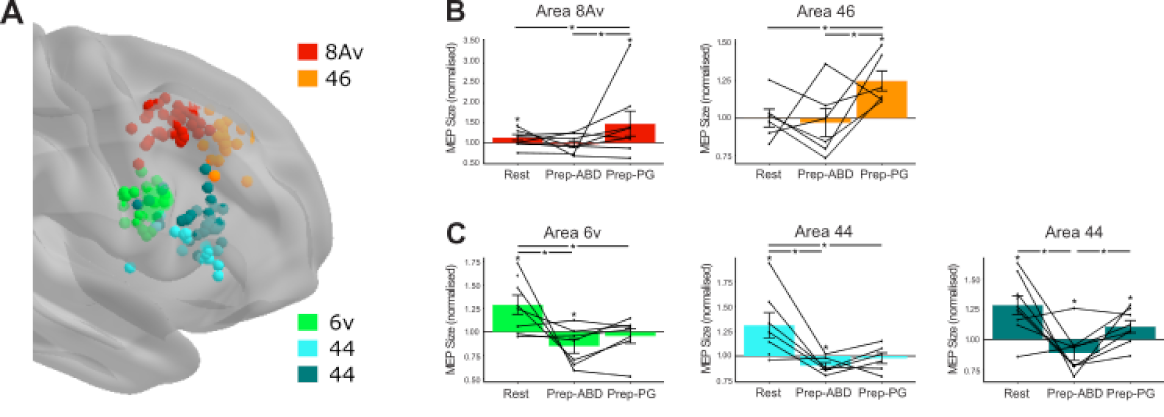Mapping effective connectivity between the frontal and contralateral primary motor cortex using dual-coil transcranial magnetic stimulation

Abstract
Cytoarchitectonic, anatomical and electrophysiological studies have divided the frontal cortex into distinct functional subdivisions. Many of these subdivisions are anatomically connected with the contralateral primary motor cortex (M1); however, effective neurophysiological connectivity between these regions is not well defined in humans. Therefore, we aimed to use dual-coil transcranial magnetic stimulation (TMS) to map, with high spatial resolution, the effective connectivity between different frontal regions of the right hemisphere and contralateral M1 (cM1). TMS was applied over the left M1 alone (test pulse) or after a conditioning pulse was applied to different grid points covering the right frontal cortex, while subjects were at rest, prepared an index finger abduction (Prep-ABD) or precision grip (Prep-PG). MEP motor maps were generated by creating synthetic fMRI volumes, including the normalised MEP values at vertices corresponding to the TMS grid locations. These maps were registered to a common atlas, and statistical parametric mapping was used to identify cortical clusters in which stimulation differentially modulated conditioned MEPs across conditions. We found five significant clusters in the frontal cortex. Three clusters in ventral premotor regions (areas 6v and 44) showed significant differential modulations of contralateral MEPs when rest was compared to Prep-ABD and Prep-PG. Two clusters in rostral dorsolateral prefrontal cortex (areas 8Av and 46) showed differential modulation in MEPs when Prep-ABD was compared to Prep-PG. Our findings demonstrate distinct regions that show task-related connectivity whereby interactions between ventral premotor regions and cM1 differentiate between rest and movement preparation and the dorsolateral prefrontal cortex differentiates primarily between preparation of different types of hand movements. These results thus demonstrate the utility of dual-coil TMS and MEP motor maps to define fine-grained sub-regions in the human frontal cortex, which are functional and causally involved in hand movements.